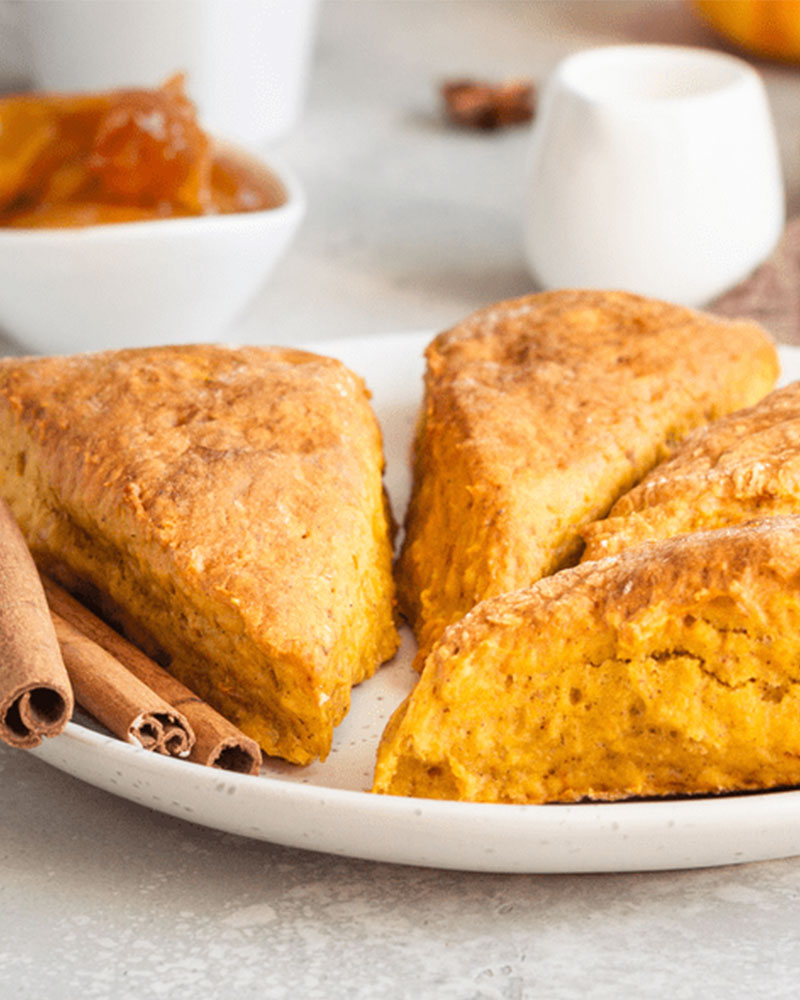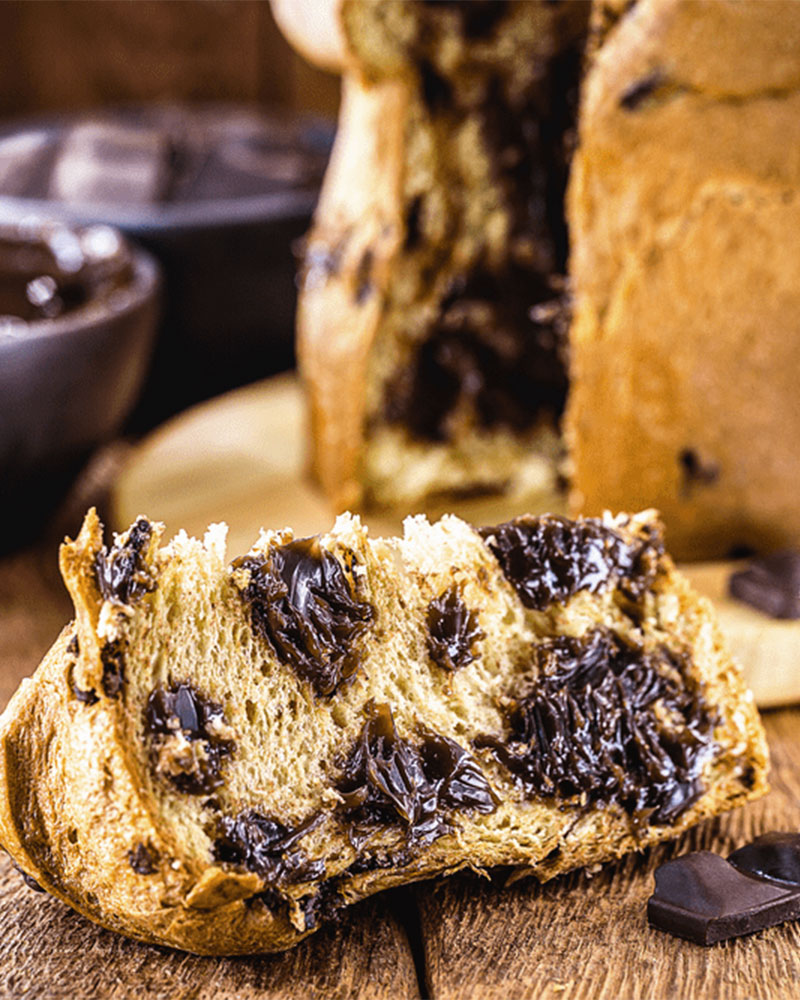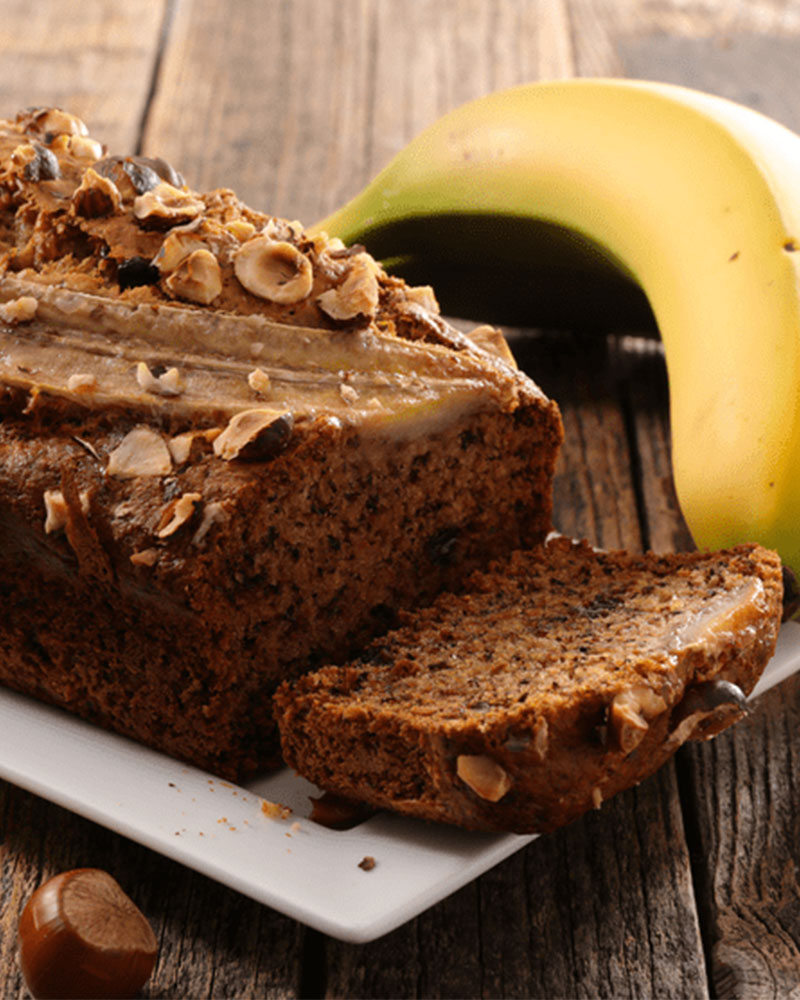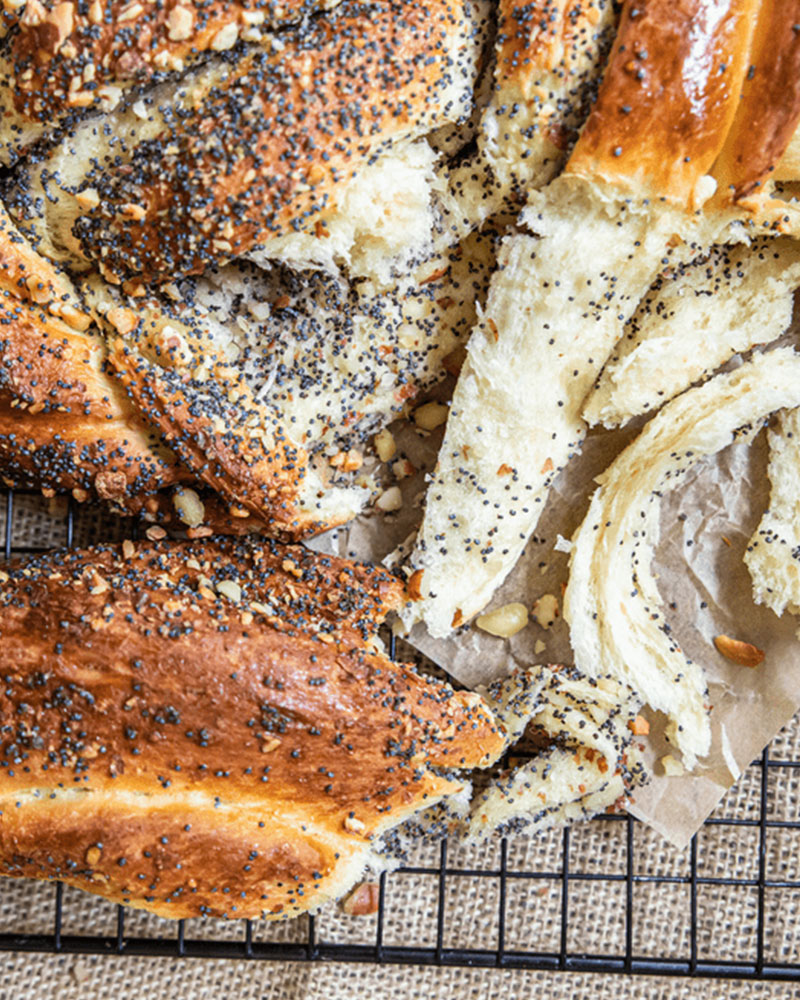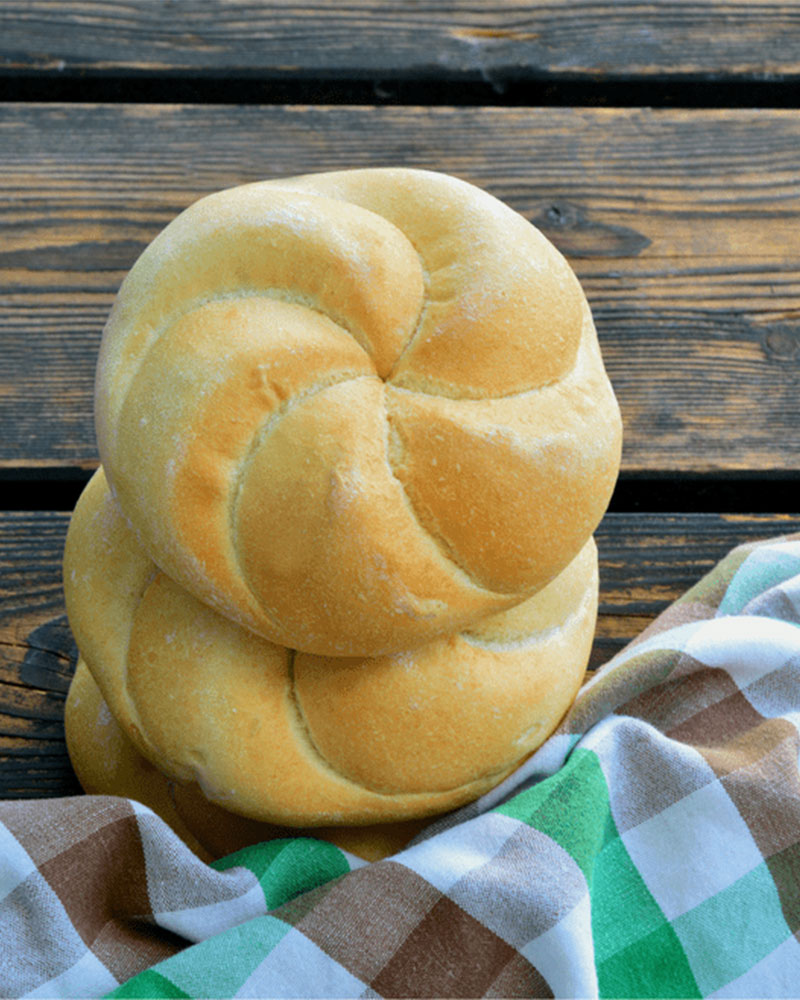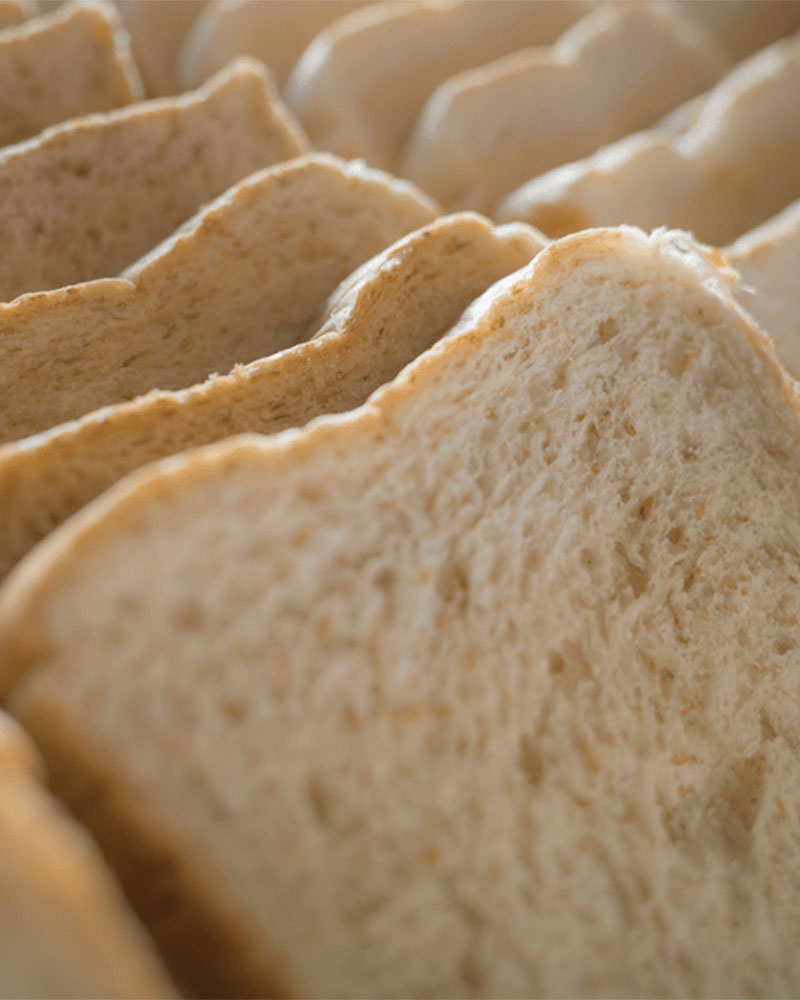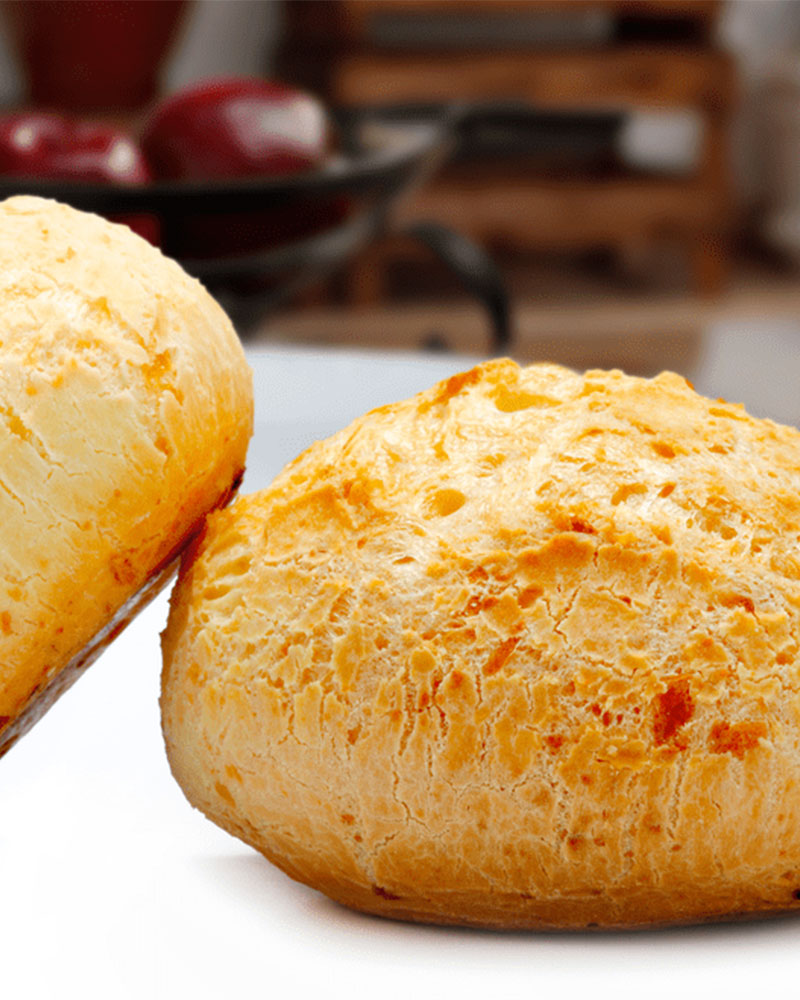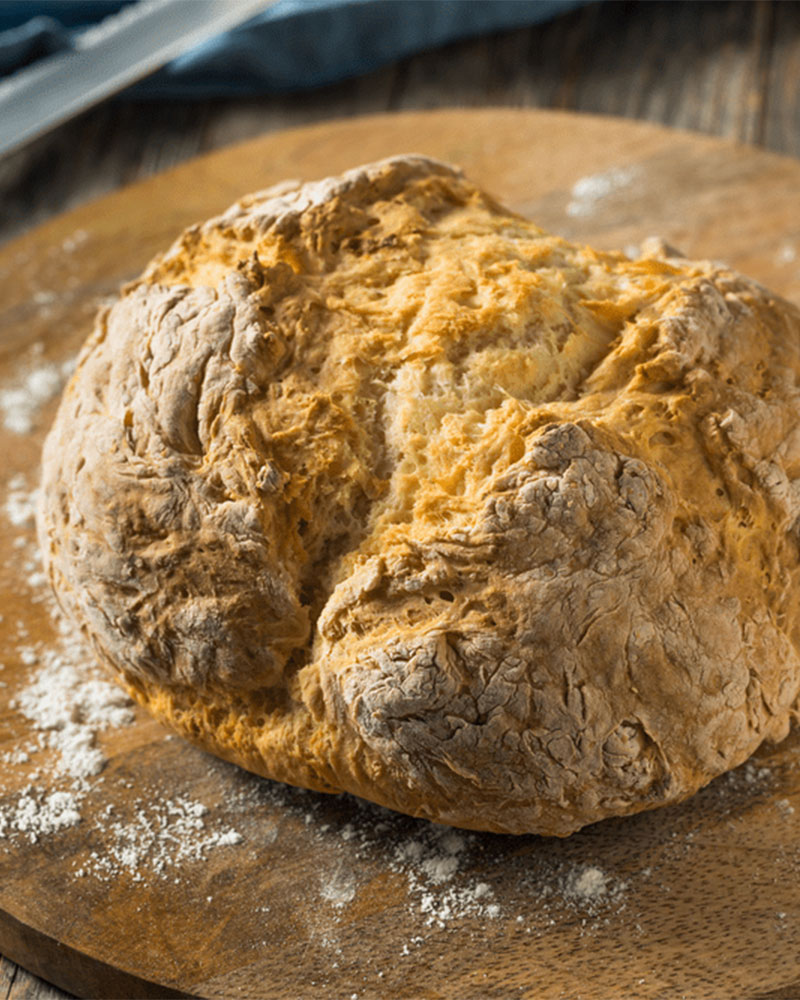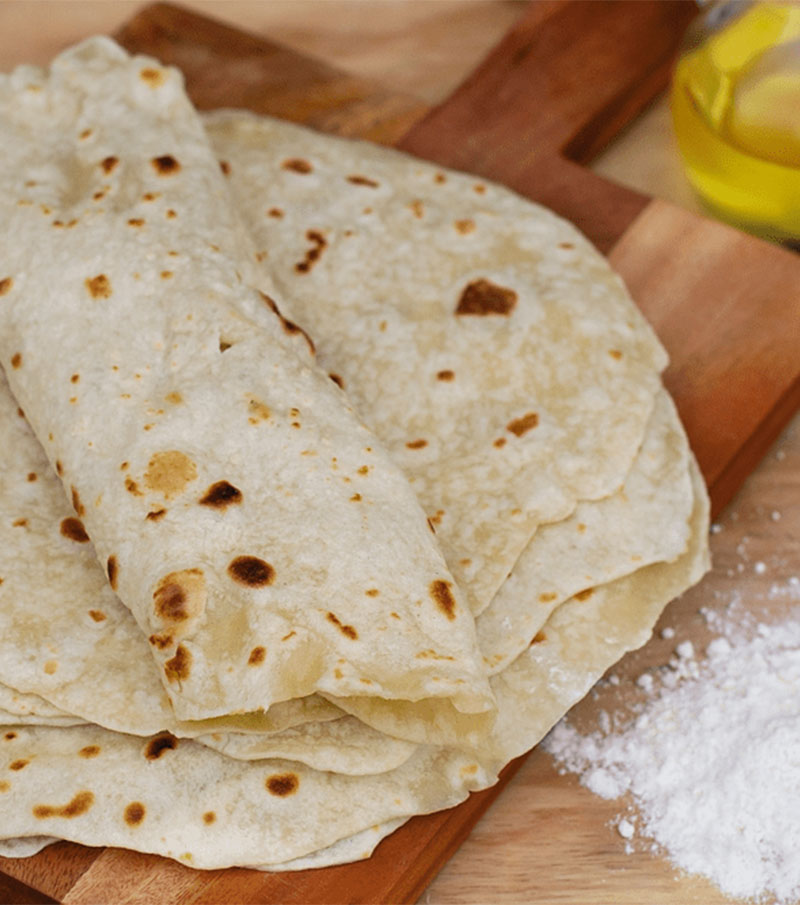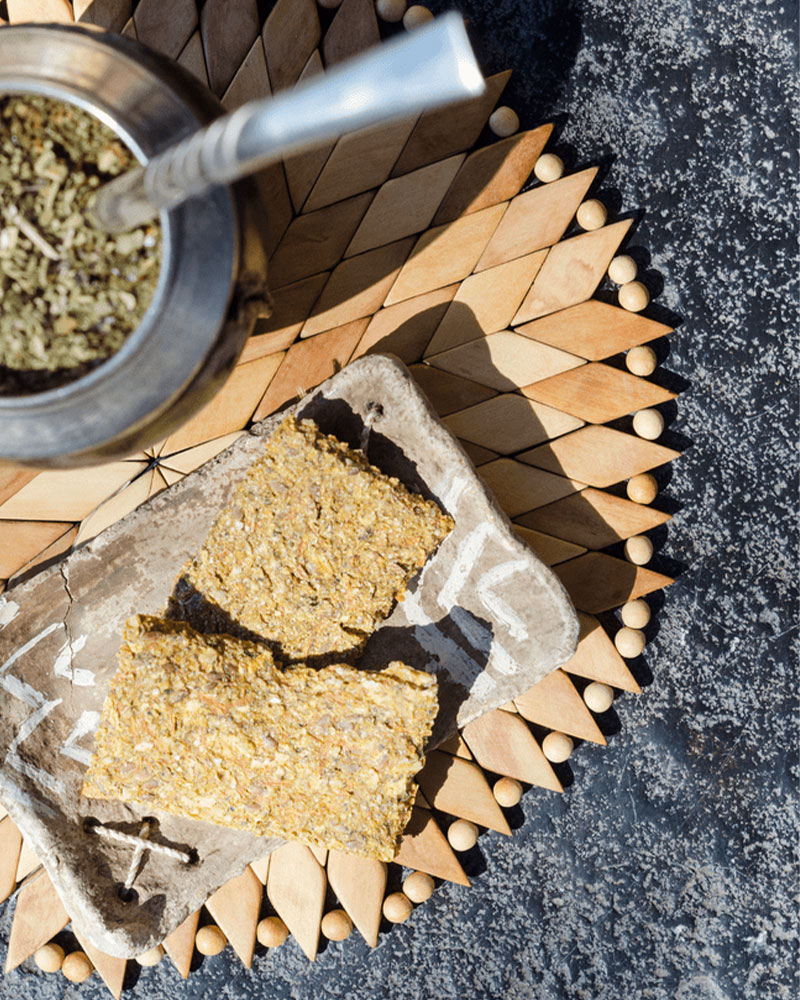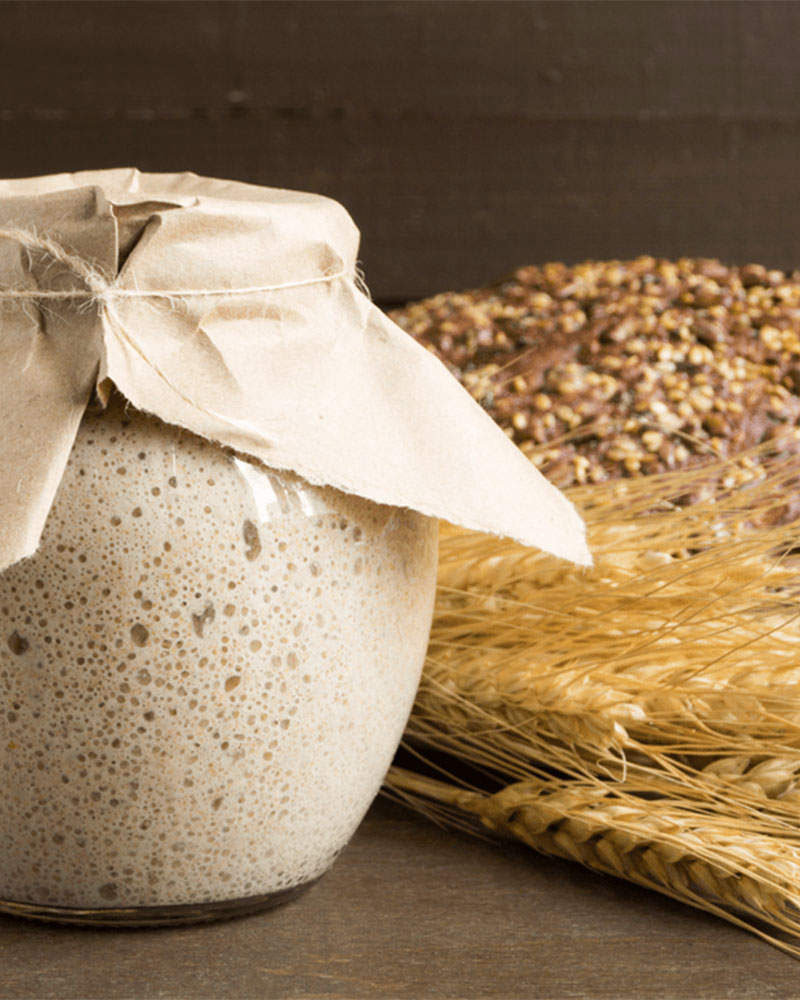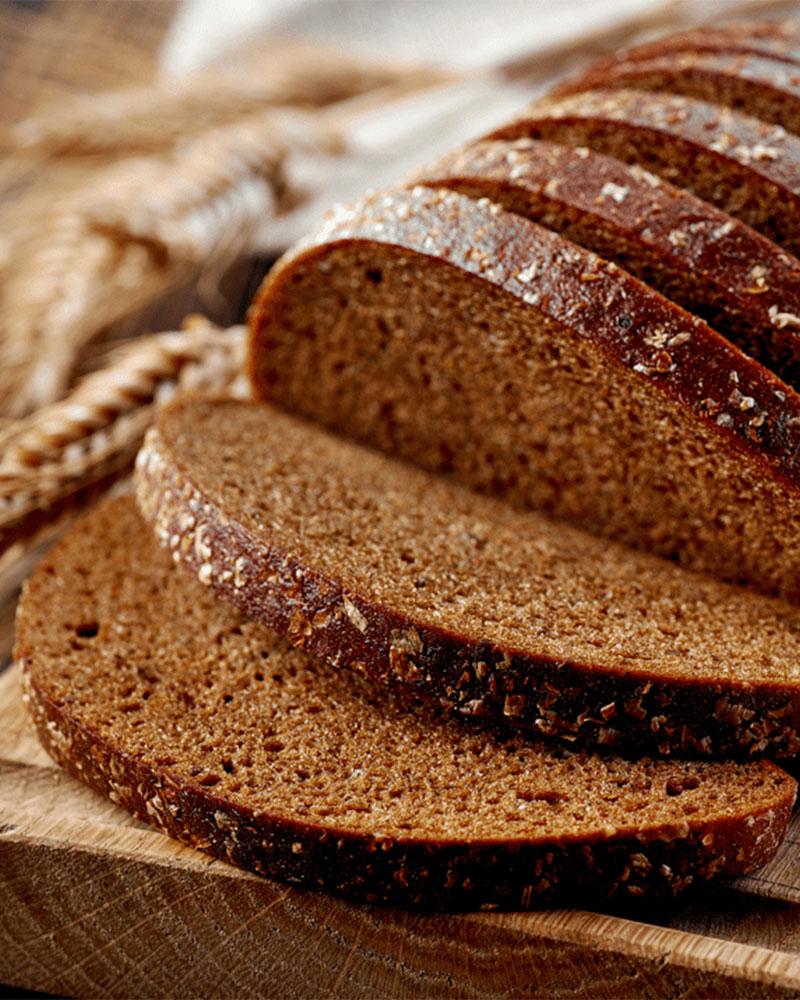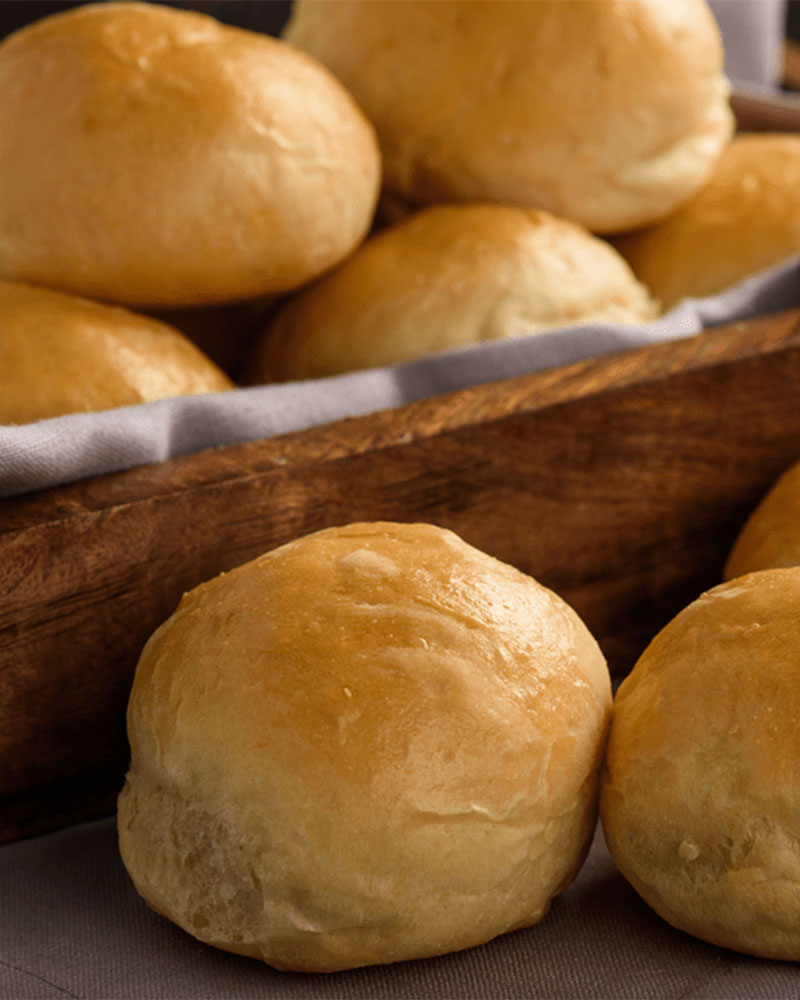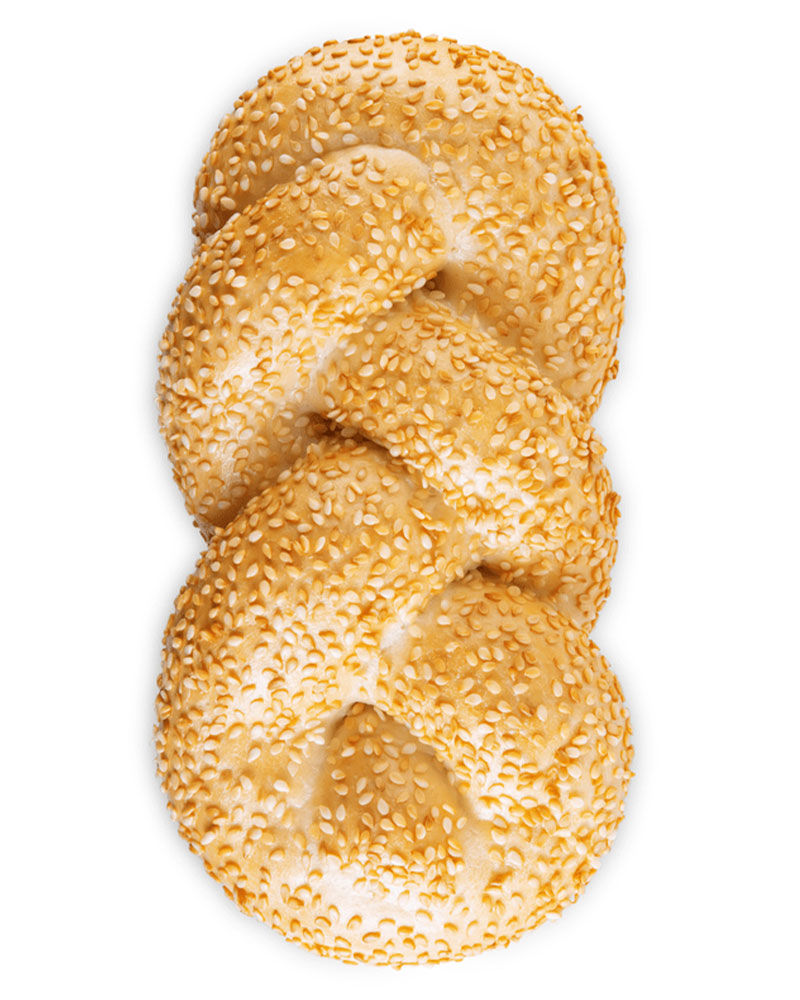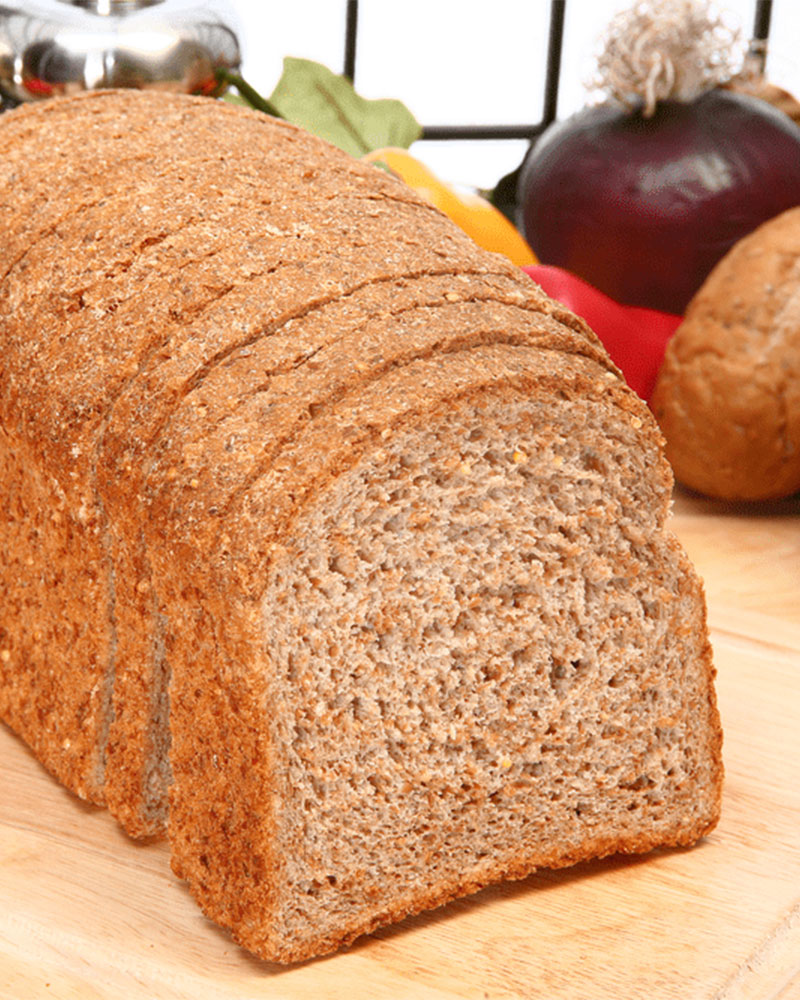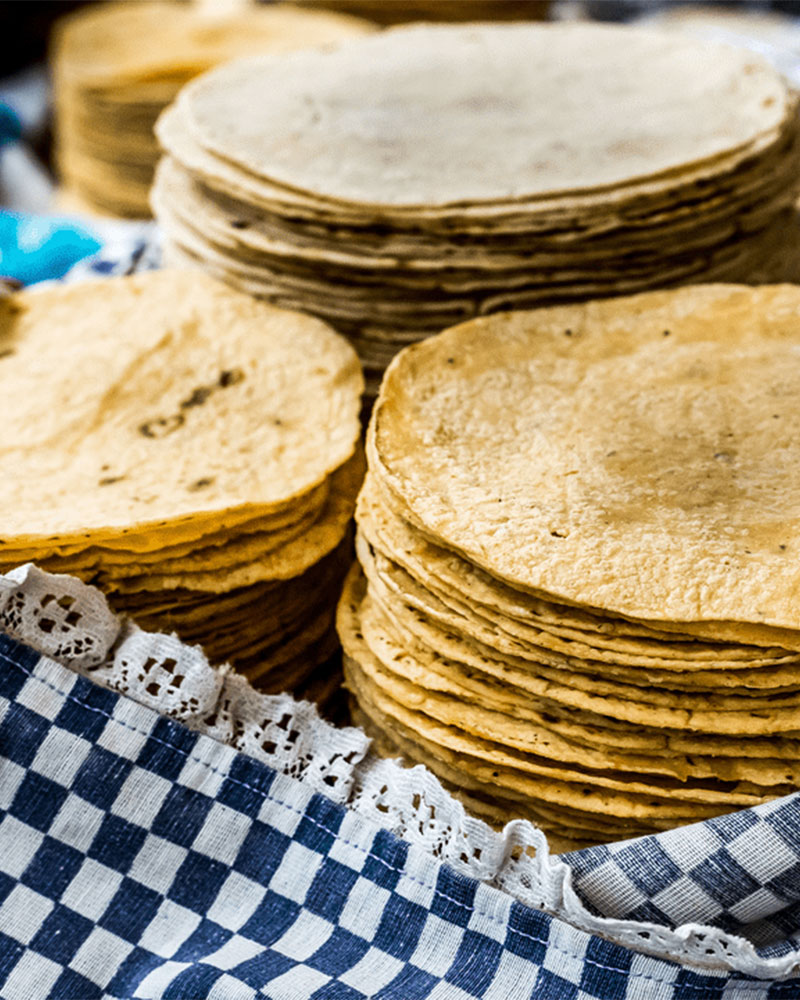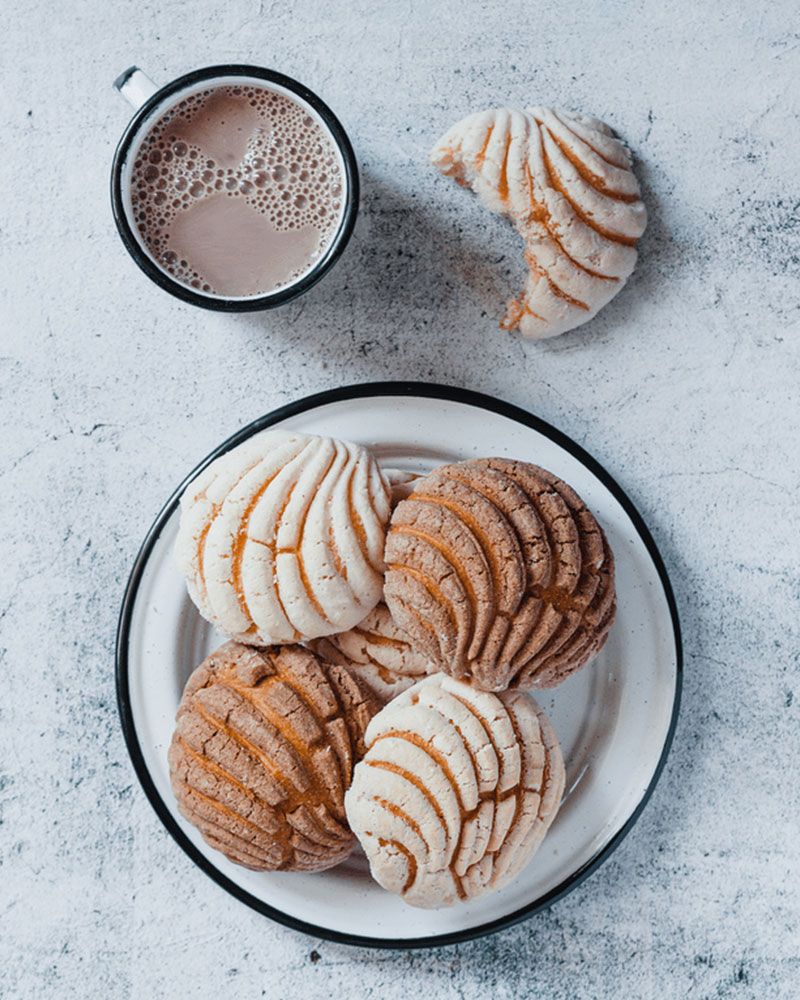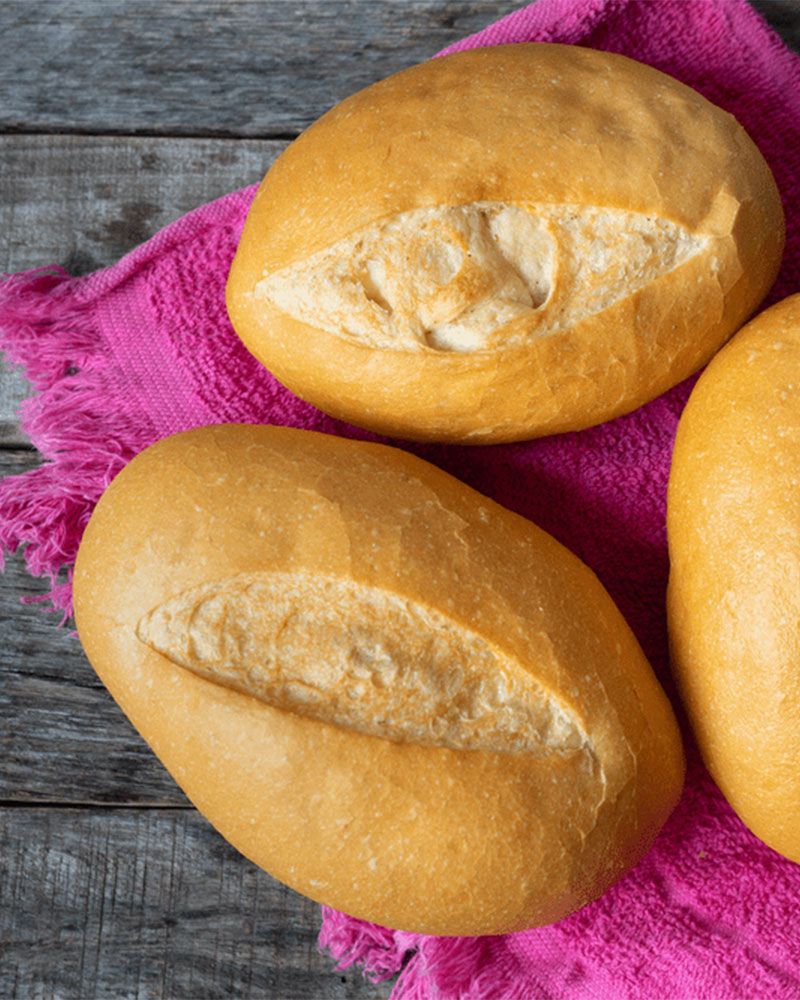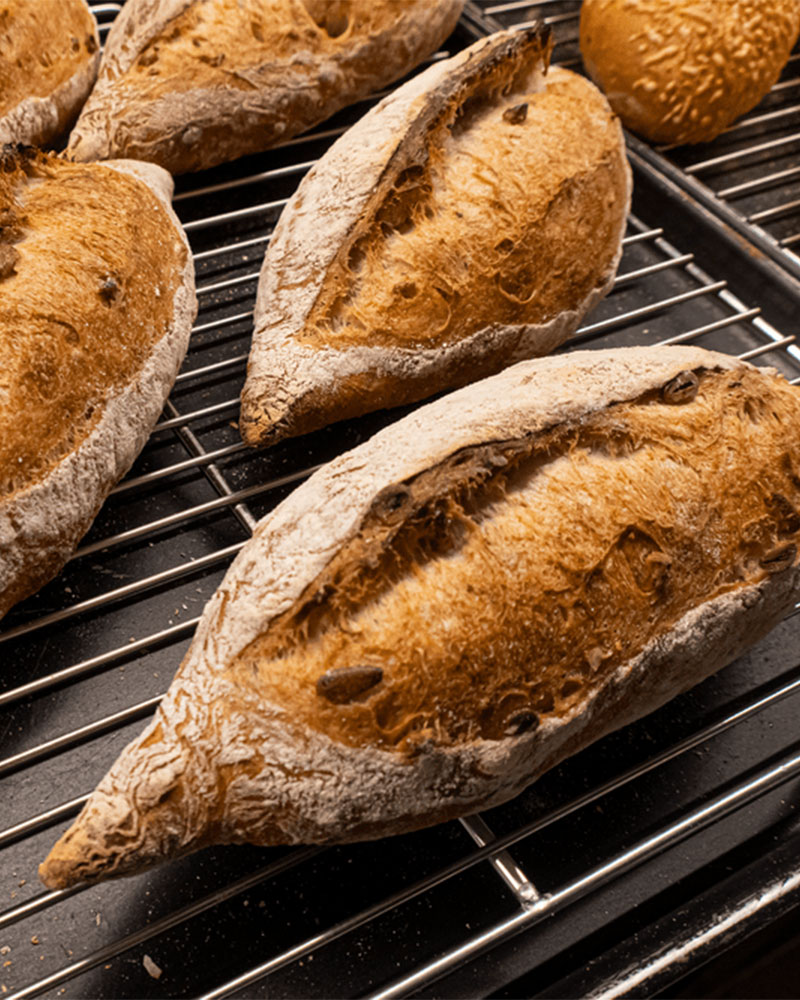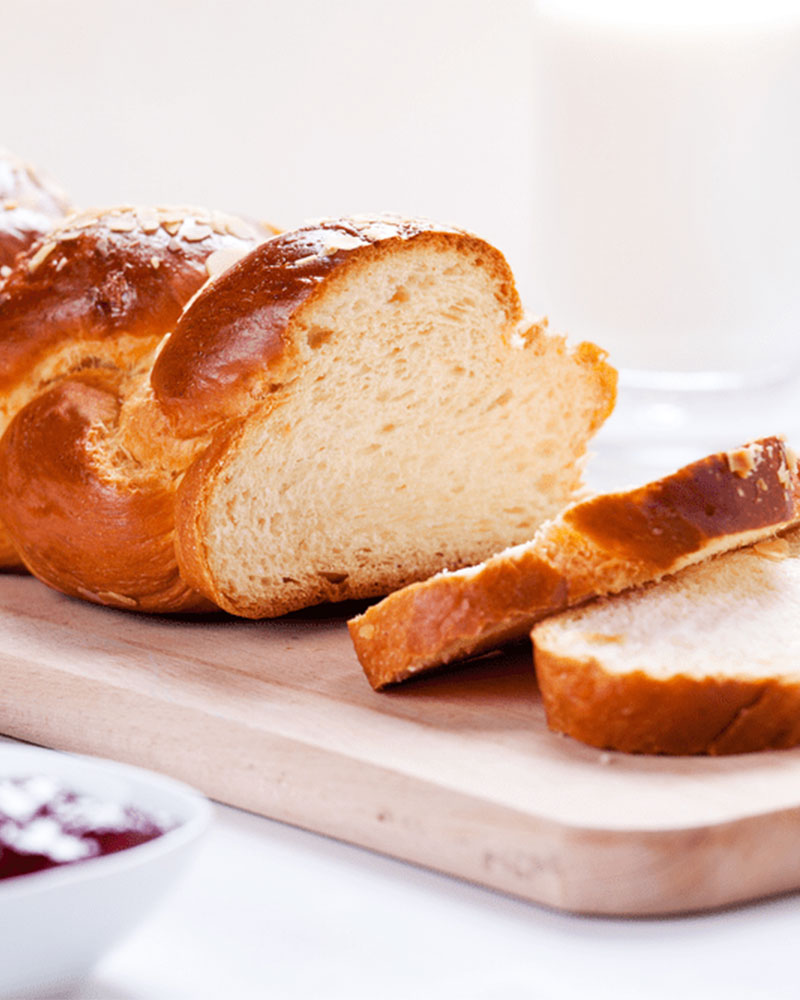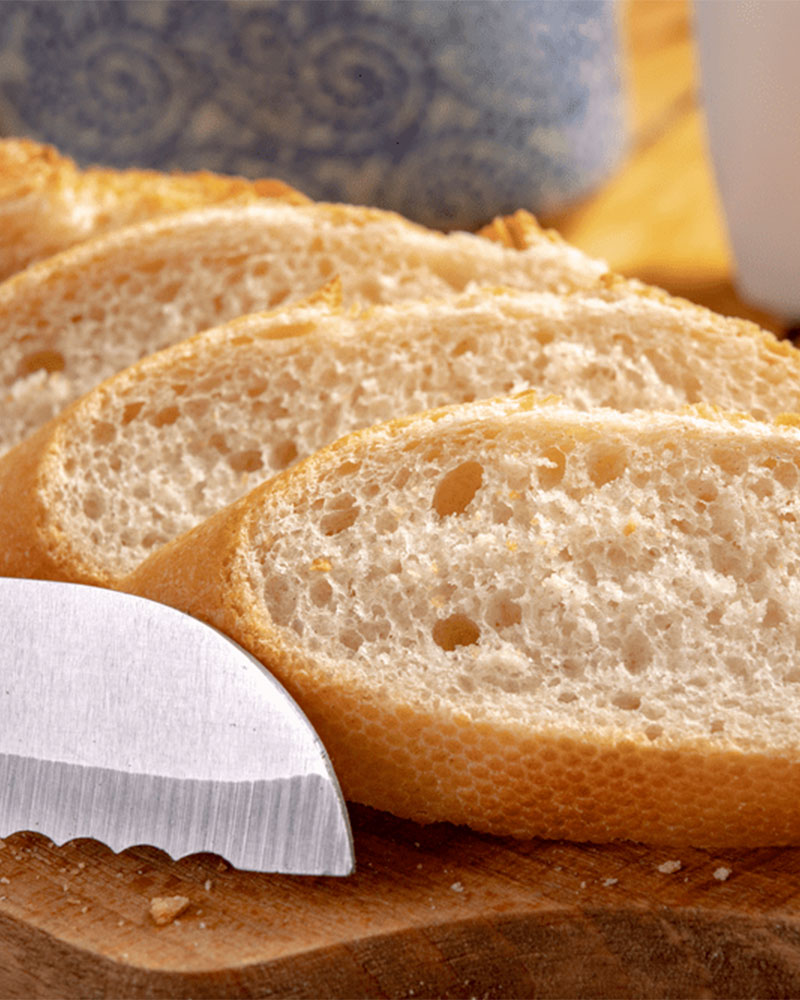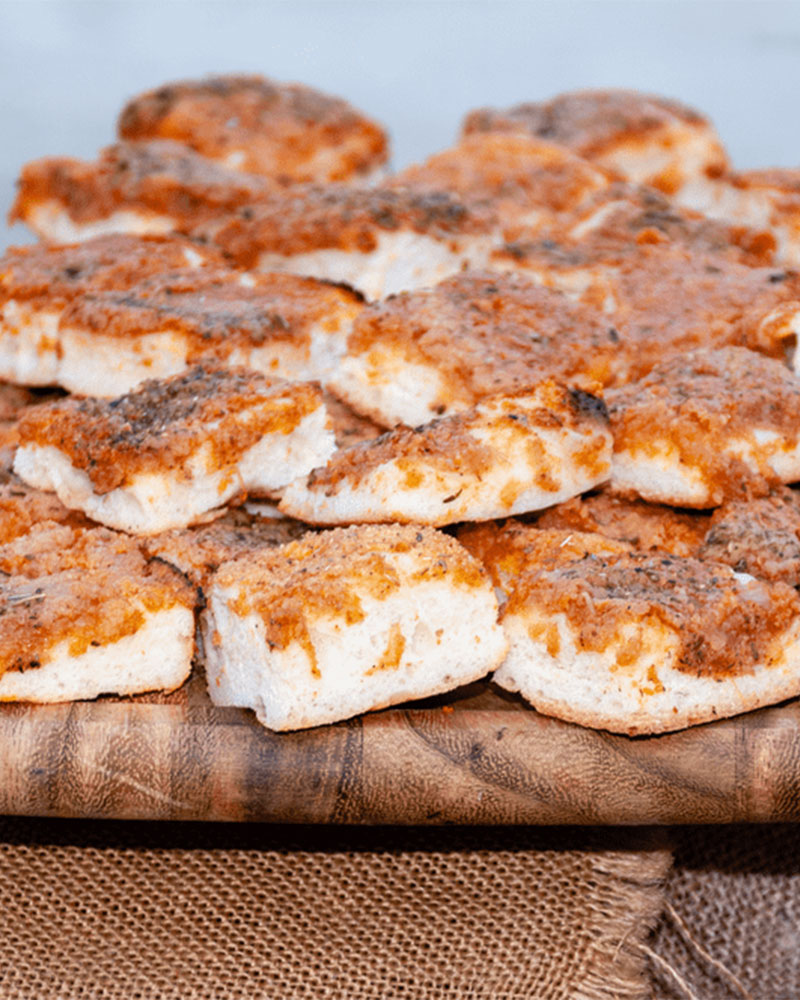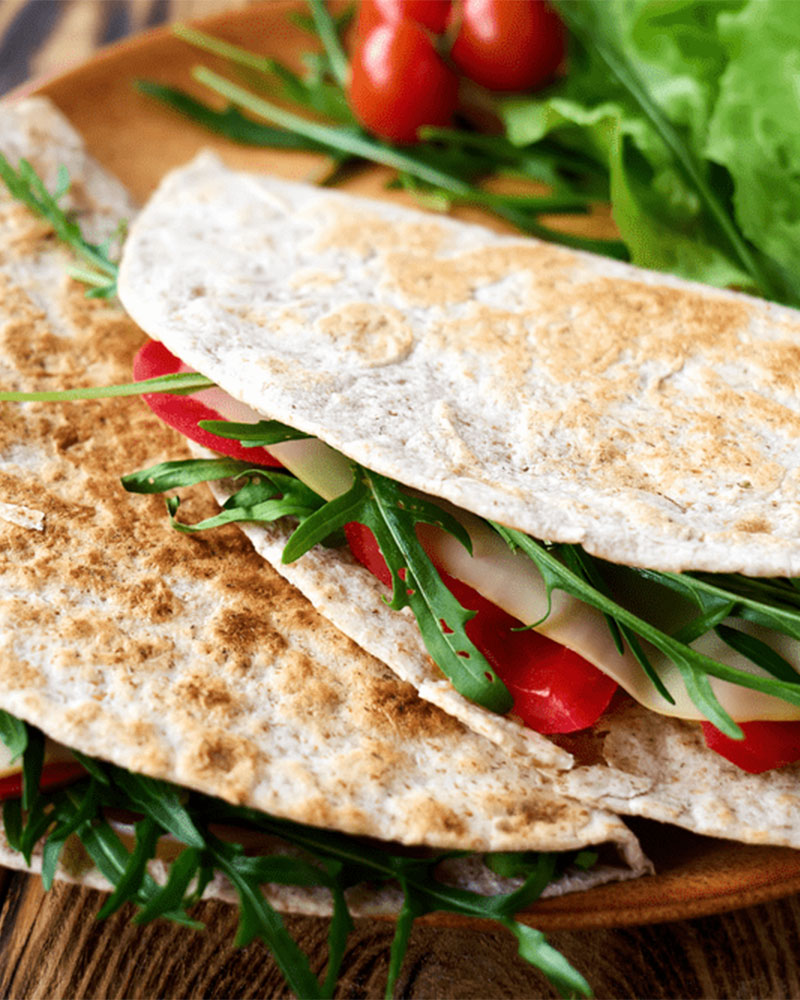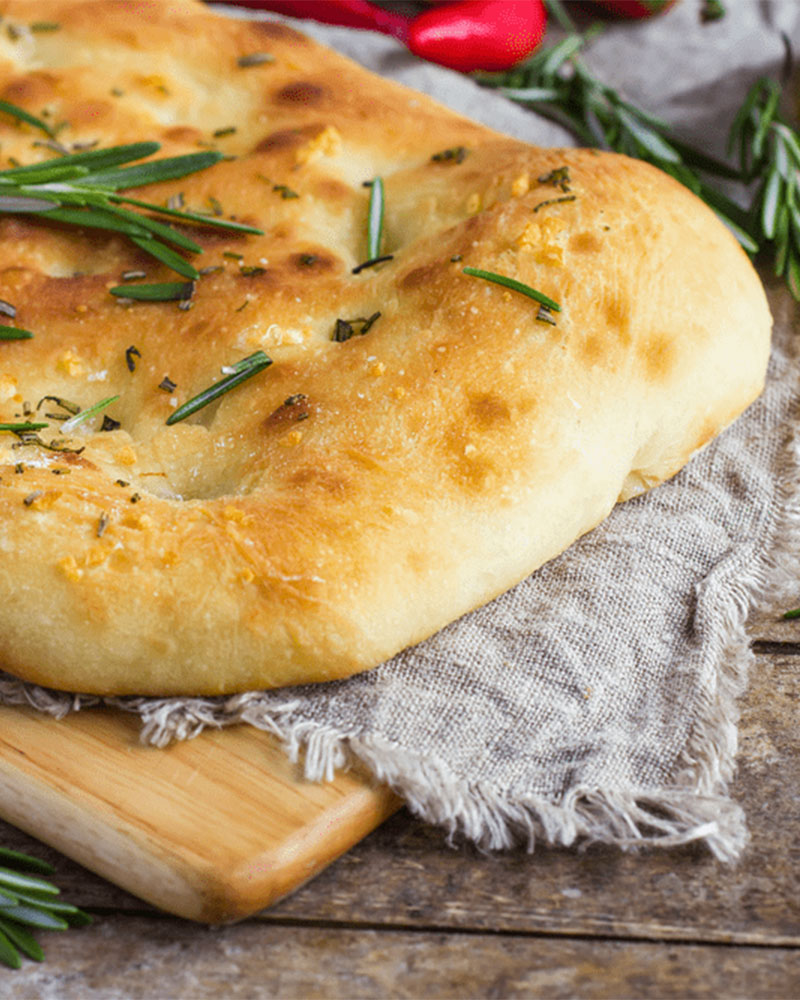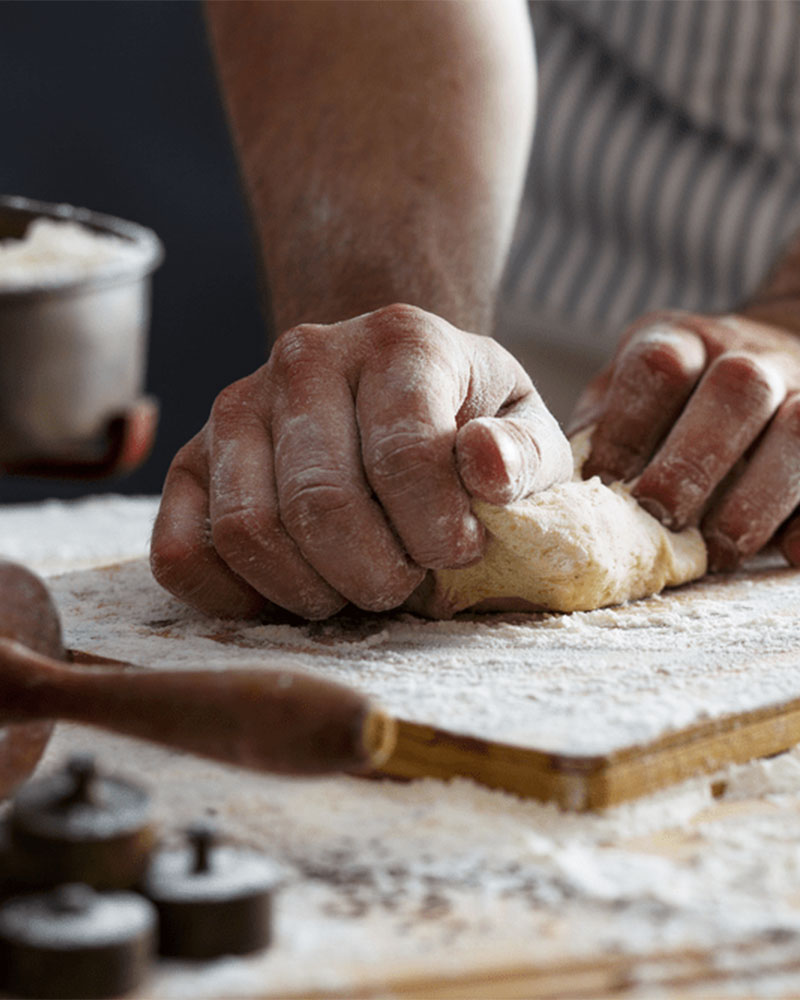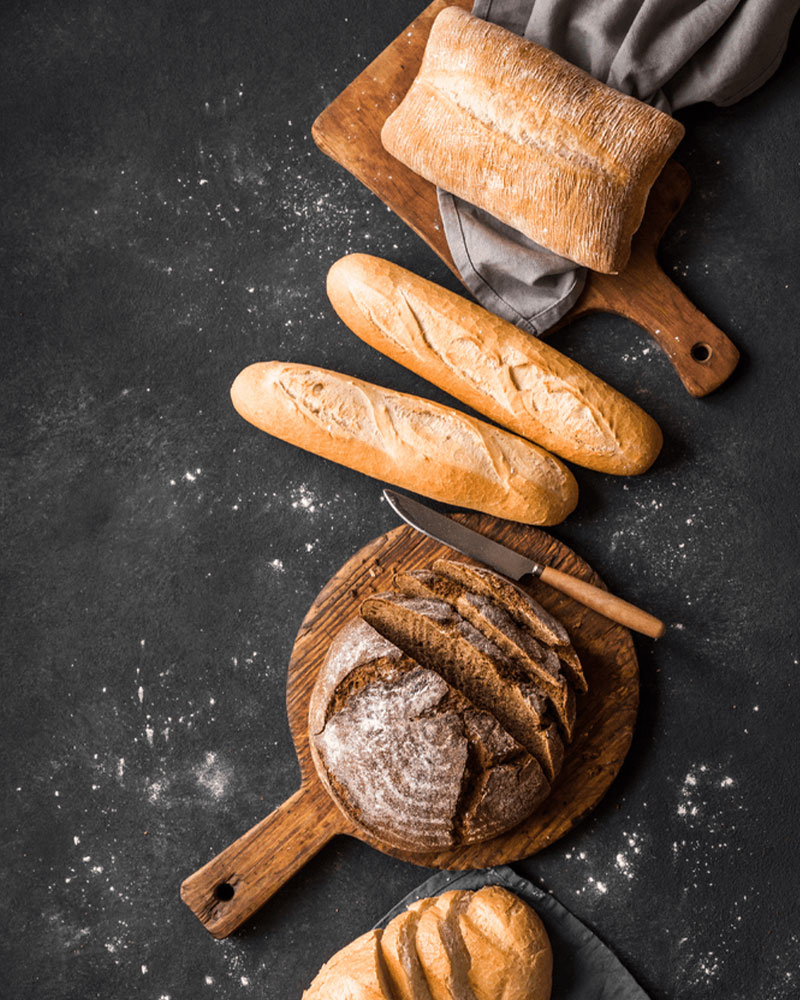Different types of bread have been staple foods in countries worldwide for over thirty thousand years. We’re not talking just your standard white, brown, and whole wheat bread here. Seeing how the ingredients, process, and uses of bread are so adaptable, it’s no wonder that numerous countries have created their own variations and types. Over 100 different types of bread are available all over the globe, starting from the basic white bread all the way up to a range of specialty breads. So, what makes bread so popular, and what exactly makes them any different from one another? The main differentiating factor is their ingredients.
What Are Breads Made Of?
Different types of bread recipes contain different ingredients. Most, but not all, types of bread are made with flour containing yeast. Flour mills create regular wheat flour by grinding the wheat after removing the germ and bran. Alternatively, some healthier loaves use whole wheat flour. To create whole wheat flour, the mills grind the entire wheat kernel, removing nothing. Some loaves don’t even contain yeast. Instead, bakers use a process called leavening, which is where they use baking powder or baking soda as a yeast substitute. Yeast, baking soda, and baking powder create carbon dioxide when heated, thus making the bread rise. Bakers can also include additional ingredients like seeds, dried fruits, and spices into their breads. These additional ingredients create more unique loaves with different tastes and textures. So, now that we’ve covered some of the main ingredients of bread let’s get into the different types of bread and how countries have adapted their recipes to develop unique and well-loved loaves. (By no means is this list an exhaust baker’s tour of every country’s bread–we just highlighted some of our favorites!)
Types of Italian Bread
Italian breads are delicious and often made with olive oil. It’s just a shame that pizza does not count as a bread… not officially at least. Looking for more tips on what to put on the dinner table? Check out our guide to the different types of wine.
Ciabatta
Ciabatta is one of Italy’s most well-known types of bread that a baker first created in 1982 in Veneto. Translated to English, the name ciabatta means “slipper,” named after the shoe shape the bread resembles. Arnaldo Cavallari, the baker who created the first ciabatta, did so because of Europe’s love for the French baguette. The most significant difference between the baguette and ciabatta is their hydration levels. When bakers bake ciabatta, they use a higher hydration level than a baguette. This high hydration level creates larger holes in the dough that give the bread its distinctive air pocket interior. Although the recipes for ciabatta change depending on the Italian region, bakers also use stronger flour to create a sweet taste in the bread. Once baked, the crust of a ciabatta is crispy and golden, making it perfect for sandwiches and soup dunking.
Focaccia
Different types of Italian bread sprout up all over the country, but focaccia bread is one of Italy’s oldest and most-loved favorites. The history of focaccia dates back almost 2,000 years, and Liguria, Italy, is considered the birthplace of traditional Italian focaccia. Historians believe the Ancient Greeks or Etruscans first created focaccia; however, its true history is unknown. Originally, bakers cooked focaccia on the hearth of an open fire, puncturing it with knives to release bubbles on the surface. They would also use a dotting technique to create wells by poking the bread before they bake it. Before placing the dough in the oven, they coat it with olive oil to preserve moisture and create a thin yet crunchy crust. Other popular focaccia toppings are sea salt, herbs, olives, and tomatoes. As the loaf is quite versatile, it goes well with steaks, salads, bread baskets, or even being used for sandwiches.
Piadina Romagnola
Piadina Romagnola is a thin Italian no-yeast bread that bakers traditionally made with white flour, olive oil, water, and salt. The flatbread was once a staple of the poor, as they could make it with cheap ingredients throughout the middle ages. Piadina Romangnola has been added to Italy’s traditional regional food products, and people enjoy it most as a sandwich. Some of the most popular fillings of a Piadina Romangnola sandwich are prosciutto, tomatoes, and soft cheeses. However, the flatbread is adaptable, can be paired with a range of different fillers, and is best eaten while the bread is still warm.
Sfincione
Sfincione is popular street food in Sicily, especially Palermo, where vendors regularly wheel them around on food trucks. History believes that bakers created the first batch of oven-baked flatbread as an evolution of focaccia bread. Sfincione became increasingly popular throughout the 19th century and is baked in a square tray, like focaccia. We can refer to Sfincione as Sicilian pizza, and like pizza dough, Italians top the dough with tomato sauce, onions, oregano, breadcrumbs, and local cheeses.
Types of French Bread
If there was a nation that could lay claim to having mastered the art of breadmaking, it would have to be the French. Their loaves a delight to sample, and always the right choice for your meal! Feeling French? Check out how to make the perfect charcuterie plate!
Baguette
When you think of types of French bread, we’re sure your mind instantly goes to a baguette. August Zang, an Austrian baker who invented, then imported the bread to France, created the first oblong shape breadstick in the early 19th century. August also introduced the croissant to France, so it’s fair to say he made a significant impact on French baking. Bakers score the dough before it goes in the oven to allow the bread to rise and not split at the seams. Bread makers typically create baguettes with flour, yeast, salt, and water.
Brioche
French Brioche are types of French bread that are light in texture and sweet in flavor. Bakers mix flour, milk, eggs, yeast, salt, and sugar to create the fluffy brioche we know today. To create the soft golden-yellow crust, bread makers brush eggs on the top of the dough before baking it. The brioche’s earliest history dates to 1404, when Norman Vikings introduced it to France. Today, brioche is a popular bread choice for French toast recipes and hamburgers.
Ficelle
Although the ficelle shares a striking resemblance to the baguette, they are not the same. Ficelle tends to be smaller and thinner than a regular baguette, often known for its classiness. Ficelle bread came about after bakers experimented with different flours while trying to adapt the traditional baguette. During the creation period, they usually create the ficelle dough with sourdough, which results in a crunchy type of bread with a nice chewy crust.
Pain de Campagne
Pain de Campagne is also known as French sourdough bread. Bakers create the loaves to be round either using baker’s yeast or natural leavening. Traditional versions of pain de Campagne are a mixture of white flour, whole wheat flour, rye flour, water, salt, and leavening. As with many sourdough types of bread, the pain de Campagne has a hard crust and dense interior. People usually like to pair it with salads or a slice of sandwich bread.
Types of Mexican Bread
Many people might be surprised to learn about the number of different breads that Mexico has to offer. From dinner rolls to the more traditionally recognized flatbreads, Mexico is a bread lovers’ paradise.
Bolillo
Bolillo comes in roll forms and is a Mexican bread similar to crusty French bread. Used to accompany most Mexican meals, the small loaf of plain white bread has a soft interior and crusty exterior. Traditionally, Mexicans eat bolillos throughout the day. For breakfast, they pair it with their morning coffee. For lunch, they’d transform it into a sandwich, and for dinner, they’d eat it with just about anything. Emperor Maximilian’s cooks brought the bolillo to Mexico in the 1860s, and ever since, it’s been a massive favorite amongst all Mexican households.
Conchas
Conchas get their name from their appearance, which means “shells” in Spanish. The small sweetbreads are eaten all over Mexico, and their history dates back to the 18th century. Often flavored, Mexicans regularly eat conchas for breakfast, accompanied by a champurrado or hot chocolate. Conchas consist of an inner enriched bread roll and a cookie dough topping that is crumbly and sweet. Originally, Mexicans mixed wheat flour, water, lard, eggs, yeast, and coarse salt to create the inner conchas. These days, however, butter is regularly substituted with lard. To make the outer cookie dough, they mix flour, sugar, and butter or margarine. Sometimes, bakers add sugar or sprinkles to the top, and sometimes they fill the conchas with whipped cream or refried beans.
Pan de Acambaro
Pan de Acambaro was named after the town it originated from, Acambaro, Guanajuato. The wide and dense loaf is similar to the Jewish Challah bread, and many Mexicans also enjoy it with a cup of coffee or hot chocolate. Bakers use a special fermented dough called masa madre (mother dough). Before baking the bread, they decorate it with slashes, glaze it, and place it in the oven.
Tortilla
Tortilla are flat, unleavened (no-yeast) bread, popularly used by people worldwide to create fajitas. More than 10,000 years ago, Aztecs created tortillas with native maize and dried kernel. Today, bread makers mix finely ground wheat flour and a water-based dough. They then press and bake the tortillas to be the thin, circular shapes perfect for wraps, roll-ups, or Mexican-inspired dishes. The size of tortillas varies depending on the country they come from and the dishes we use them for.
Types of Healthy Bread
We all know that bread is not allowed on most diets. However, there are several different healthy breads out there. While still only to be enjoyed in moderation, they give you the room to indulge every once in a while.
Ezekiel
Ezekiel bread differs from other types of bread, as it contains no sugar. When creating Ezekiel bread, bakers use a variety of whole wheat grains and legumes that have already started the sprouting process. Creators of the Ezekiel bread named it after a verse in the Old Testament. The verse reads: “Take wheat and barley, beans and lentils, millet and spelt; put them in a storage jar and use them to make bread for yourself.” As the grains and legumes have begun sprouting, it changes the nutrient composition of the bread. The sprouting process makes Ezekiel bread incredibly nutrient-dense and helps our bodies digest the bread more efficiently. As grains are hard to digest, letting the grains sprout releases enzymes that we can easily process. People usually toast Ezekiel bread and serve it with a selection of different toppings.
Poppy or Sesame Seed Bread
The addition of poppy or sesame seeds to your bread provides a great source of fiber and healthy fats. Bakers can add sesame or poppy seeds into sweet bread, whole wheat bread, or white bread to boost the bread’s fiber and vitamin content. When you eat these seeds as part of a healthy diet, you can reduce your blood sugar, blood pressure, and cholesterol.
Potato Bread
The weird, but wonderful potato bread, is a wheat flour bread containing mashed potatoes. Yes, you heard it right, mashed potatoes. The added mashed potato creates a moist and chewy center, but it also produces a magnificent crust. Worldwide, people eat potato bread with sandwiches, pulled pork, and even French toast. Potato bread contains potassium, seven times more than white bread and three times more than whole wheat bread. It does, however, have more calories than wheat bread, but they also have more protein and fiber.
Rye Bread
People considered rye bread a staple throughout the Middle Ages as rye grew extremely well throughout north-central, eastern, and western Europe. Many thought rye bread to be the bread for lower-class families, but its rich flavor has since gained popularity in the bread community. Rye bread can range in color, from light to dark, depending on the bread flour and coloring agents bakers use in the making process. And unlike wheat flour bread, rye bread has a strong flavor and higher fiber count. To make rye bread have an earthier flavor and texture, bakers also tend to add dill seeds or caraway seeds. People worldwide enjoy rye bread, corned beef, and mustard sandwiches, with the bread giving the sandwich a unique and signature taste.
Sourdough
Sourdough has taken the world by storm, and people everywhere are enjoying it with their morning avocado toast. When creating sourdough, bakers don’t add yeast to the mixture; instead, they use a “starter.” A sourdough starter is a water and fermented flour mixture that contains good bacteria and wild yeast. The tangy flavor you taste while eating sourdough is present because of said starter. A loaf of sourdough has a soft center with large air bubbles and a thick crust, making it an excellent option for toast and sandwiches.
Types of Bread Without Yeast
Unleavened breads are popular across the globe. Put down your yeast and explore a different side to bread making. The results are not only surprising, but delicious too.
Chapati
Indians, especially those in northwest India, cook an unleavened type of bread called Chapati on traditional iron pans. The pans distribute the heat evenly to cook the yeast-free bread made of semi-whole flour, salt, and water. Chapati is an extremely common bread throughout India, and we can also find variations of the bread across Asia and Africa. Indians often use Chapati as a tool for eating, to scoop up foods with a more liquid consistency, like curries.
Essene Bread
The Essenes were a Jewish sect that existed from the 2nd century BCE to the 1st century CE. They believed in everything from celibacy to eating only basic vegetarian foods. These beliefs created the Essene bread. To make Essene bread, you only need two ingredients, sprouted grains and water. Traditionally, people would have baked Essense bread on hot rocks under the sun for long periods of time. But nowadays, people dehydrate Essense bread or leave it on low heat in the oven for roughly 8 – 10 hours.
Lavash
Lavash is enjoyed throughout Turkey, Armenia, and Iran and is a type of bread without yeast. Traditionally, Middle Eastern people make simple lavash dough with flour, water, and salt. The minimal ingredients in the bread mean it is low in fat and adaptable to a range of different meals. Meats, vegetables, butter, or cheese make great accompaniments for lavash, and other countries have different ways of serving it.
Soda Bread
Traditional soda bread, also known as Irish soda bread, is a type of bread made with baking soda (or baking powder) instead of yeast. Soda bread is a type of quick bread traditionally made in Ireland. During the baking process, they stuff it with either seeds or dried fruit bake it as a flatbread on a griddle or as a simple rustic loaf. The ingredients bakers use to make traditional soda bread include flour, buttermilk, baking soda, and salt. The buttermilk contains lactic acid that forms tiny bubbles when mixed with baking soda, causing the bread to rise. Throughout the soda bread’s interior, the bread is soft and tender, whereas the exterior is golden brown and crusty. Due to its soft interior, it pairs well with jams, marmalades, or soups.
Types of Sandwich Bread
The sandwich is the king of lunches. Not much can compete in terms of taste, appeal, and flexibility. But did you realize just how many types of sandwich breads there are to try?
Cheese Topped Rolls
Cheese topped rolls are commonly used for sandwiches, and their recipe isn’t much different from that of a regular white bread roll. The main difference between the two, of course, is the cheese. Before baking the rolls, bakers sprinkle mature cheddar cheese on top, which gives the bread an entirely different taste.
Pullman Bread
Pullman bread is the most used type of bread for sandwiches and has the alternate name of sandwich bread. Bakers create Pullman dough with flour, yeast, salt, butter, and water, before baking it in a long, lidded, narrow pan. The Pullman loaf got its name from the Pullman railway cars from which the pan it is baked in was created. George Pullman realized that three lidded baking pans fit in the same space as two standard round-topped pans. So George opted for the lidded pans to save on space in the small train kitchens, and then the Pullman white loaf was born. As Pullman bread is highly versatile, you can pair it with various sandwich fillings, dip it in boiled eggs, or even use it to accompany soup.
Seeded Bread
Many types of bread come under the seeded bread category, and essentially, it is any bread with added seeds. Seeds are incredible sources of fiber, minerals, and healthy fats, so many people like to incorporate them into their sandwiches. The seeds not only provide wonderful nutrition, but they also supply unique tastes and textures. Some common seeds bakers add into bread include:
Poppy seedsSesame seedsPumpkin seedsSunflower seedsChia seedsLinseeds
Vienna Rolls
Vienna rolls or Vienna bread originated in Austria and pairs well with sandwich fillings or soups. When baking the bread, bread makers include steam heat instead of dry heat, which gives the bread a unique glazed crust. Bakers most commonly make Vienna bread in oblong loaves but occasionally in round loaves.
Types of Sweet Bread
Just when things couldn’t get any better, you realize there are a wealth of sweet breads out there that can make the ideal snack or even dessert. A bread lover’s dream come true.
Babka
Jewish communities in Eastern Europe created the sweet braided bread called babka in the early 19th century. To create babka, bakers roll out the dough and spread fillings of chocolate, fruit, cinnamon, or cheese. Then, they roll it up and braid it before baking it, creating distinctive chocolate swirls throughout the center. In Poland, bakers use the babka recipe but add their own twist. Polish bakers add the dough to raisins, dried fruits, citron, and then soak it in brandy or rum.
Banana Bread
When your bananas are too ripe to eat, there is only one thing to do with them, make banana bread. Although banana bread may seem like a cake, it is actually a type of quick bread. Americans originally created banana bread in the 1930s after the arrival of bananas in the US 60 years prior. When the Great Depression hit, banana bread took America by storm as the ingredients were cheap and easy to find. Fast forward 90 years, when the world entered a global pandemic, banana bread yet again became a popular baking project worldwide. The simple recipe of bananas, butter, sugar, egg, baking soda, and flour creates a protein and healthy fat fuelled bread.
Panettone
Panettone is a famous Italian sweet bread dating back to the 15th century. Italians often gift panettone to friends and family during Christmas, as the bread represents kindness. Traditional panettone is more expensive than a shop-bought panettone as bakers spend hours hand-making each loaf. Before baking, they fill the bread with candied oranges, lemon peels, and raisins. Once it’s finished baking, Italians usually eat it with ice cream or hot chocolate. Legends say that a man named Ugheto Atellani created the first panettone to win over the daughter of a local baker. The legend also says they fell in love, and he served the panettone at their wedding. Obviously, we don’t know if this story is true, but the hopeless romantic in us wants to believe so.
Scone
Scones are another type of quick bread, this time of British origin. Historians believe that scones first originated from Scotland in the early 1500s. The scones’ popularity grew after the Duchess of Bedford wanted sweet bread with her tea. Included in these sweetbreads were scones, which are now an essential part of afternoon teas throughout England. The dense interior of scones matches well with jam and cream, which are now the scone’s most common pairings.
Stollen
Stollen is a German fruit bread that Germans traditionally eat during the Christmas season. Bakers add nuts, dried fruit, and spices to the dough before coating the baked loaf with sugar or marzipan. Dating back as far as the late 1500s, Stollen is a dense and rich bread that they often serve with butter, honey, or jam.
Final Thoughts on the Different Types of Bread
Egyptians created the first bread over 5,000 years ago, and to this day, it still remains a popular staple in households worldwide. Bread is an excellent pairing with many dishes, and the sheer diversity of loaves will keep it a family favorite for years to come. Of course, like with most things, recipes adapt, and we’re sure we’ll see new types of bread popping up globally. As this article comes to a close, we’d love to know what’s your favorite type of bread? And what do you love using bread for? Sandwiches, soups, or as a clean-up tool? Let us know down below!

